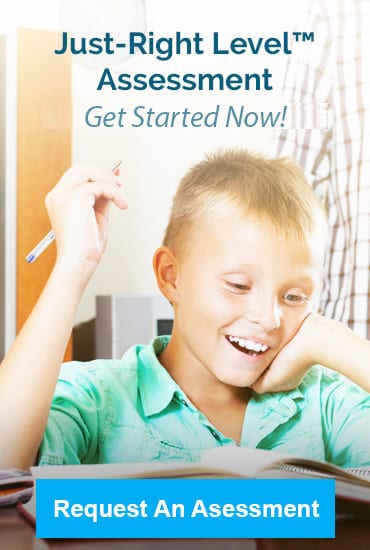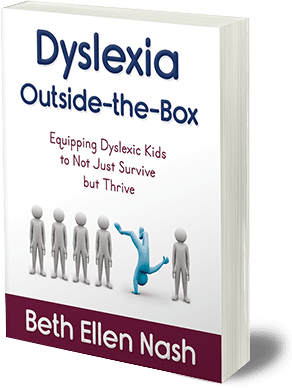Dyslexia Treatment Options

Getting Help in the Schools
Schools vary widely in how well they are able to provide dyslexia treatment and support for dyslexic kids. If you suspect a learning problem and want to have your child evaluated by the school to see whether they might qualify for special education services, you have the right to request that evaluation. By law, schools must begin such an evaluation within a defined period of time, which in many states is 45-90 days. Many schools use a formal response-to-intervention (RTI) approach as a part of the process to see whether the student qualifies for special education services. It first has to be determined that the student is not making adequate gains in the presence of quality instruction, through research-based intervention, before identifying the student as having a learning disability.
If your child qualifies for special-education services after a series of assessments and meetings, a plan which in the US is called an Individualized Education Program (IEP) will be created outlining specific goals and services to help your student meet those goals.
Your knowledgeable requests for appropriate accommodations can help your child get the support they need. The school, however, is under no obligation to provide any specific dyslexia treatment intervention or accommodation. It may not be able to afford to provide this sort of support through either financial or human resources.
Seeking Help Outside the School
In practice, a child usually needs to be two years behind to qualify for services. If you recognize the need before then, do not wait for the system to further handicap your child. Begin dyslexia treatment intervention immediately. This will likely need to be at your own expense.
Even when a child does qualify for special-education accommodations and services and the school is able to provide them, many parents find that they really need additional targeted dyslexia treatment remediation outside of school.
Far too often we’ve found that students in fifth and sixth grades and in middle school have to spend so much time on day-to-day homework just to keep their heads above water that little time and energy is left for remediation during the school year. For these students we recommend a summer intensive intervention program to make as many gains as possible during the summer. Such focused intervention is a much better use of their summer than “more of the same” summer school. Wings to Soar provides afterschool and summer intensive intervention to supplement the support provided (or not) in the public school.
During the school year the student should focus most of their energy on keeping up with current academic demands. But their brain needs to use their newly developing skills so they don’t lose any gains they have made, so a less intensive maintenance program should be employed during the school year.
Most general tutoring centers, such as Sylvan, Huntington, Kumon, and others like them, don’t provide the kind of focused, intensive dyslexia treatment intervention that gets at the core of learning challenges for a dyslexic. They are a better fit for a student who is just struggling a bit in school rather than for someone with a true brain-based learning challenge.
There are private tutors and specialized learning centers that target the unique needs of dyslexic treatment. In more detail in Orton-Gilingham Dyslexia Tutoring and Online Options.
Homeschooling
Families often get frustrated with a school’s inability to meet their child’s needs and decide to homeschool. But many make the mistake of trying to re-create at home the same system of education that wasn’t working. This is natural because it is what they are familiar with themselves. Most homeschool curricula they consider use the same grade-level focus that has previously failed their student.
A child is not a grade-level package. There are multiple different skill strands within the broader subjects of reading, language arts, and math. A student’s ability can vary widely, even across many grade levels, between skill strands within each subject. A dyslexic child who is chronologically a fifth-grader might have first-grade-level spelling skills, third-grade-level skills in written composition, the speaking and listening vocabulary of a high-schooler, and reading comprehension that matches their fifth-grade schoolmates. No pre-packaged curriculum can meet them where they are in each skill strand.
A student might have been physically or mentally absent when a concept was taught, it might not have been presented in a way in which they could learn, or their brain might not have been developmentally ready when the curriculum stated to teach it. It is time well spent to go back and lay a strong foundation by filling in gaps, as many concepts are prerequisites for later learning.
We work with many homeschooling families that have pulled their dyslexic student home because they were floundering in school despite supports provided. Many of these families work with us to create a reading and language-arts plan that specifically targets their child’s exact needs instead of wasting their valuable time and energy on activities that are poorly matched to their child’s current abilities. By backing up to the student’s level and bumping up the time and intensity at this Just-Right Level, we often see one-and-a-half to three years’ gain in reading in six to twelve months.
This is accomplished by using regular homeschool time in targeted ways, not by hours of homework or extra tutoring. Imagine having that time free to devote to family or personal interests. Appropriate levels of instruction, practice, spaced review, and assessment are built into the programs we choose for the student. Reteaching is provided if needed. Targeted supplemental practice sheets are often available for topics such as commonly confused words and reading skills.
Drawing upon my experience and advanced training with Orton-Gillingham, Davis Dyslexia Correction, and several approaches for addressing underlying cognitive functions, I’m able to assist families in figuring out which components are appropriate to address their child’s unique needs. Only an educational psychologist or similarly qualified professional can provide an official dyslexia diagnosis. I can guide a family down the path to which interventions are likely to fit for dyslexia treatment whether or not they pursue an official diagnosis. Because many students simply need early intervention, a custom Path to Success Learning Plan from Wings to Soar Online Academy can fill the gaps and have the child reading at grade level for less than the cost of getting an official diagnosis.
Wings to Soar Path to Success™ Personalized Learning Plans
Addressing underlying cognitive functions first, or concurrently with other strategies, can enhance a student’s learning potential whether or not their challenge is dyslexia. It can make any other dyslexia treatment intervention and/or academic learning more effective, and might be the best investment of your limited financial resources. Programs like BrainWare SAFARI, Fast ForWord, and Cogmed Working Memory Training are some of the programs that strengthen these brain processes.
Dyslexics with strong 3-D picture-thinking abilities can likely benefit from some or all of the Davis approach to dyslexia treatment. This is especially true if they have ongoing difficulty with the dyslexic trigger words, those high-frequency words that are not easy to picture. The Davis approach is not recommended before age seven, and age nine is the most expedient age at which to begin. If you suspect problems, intervene early with an Orton-Gillingham approach. For many, this is sufficient by itself. For those who need Davis, it will have laid the phonics foundation needed for spelling.
Please refer to Path to Success™ Personalized Learning Plans to learn more about our whole-person approach at Wings to Soar to dyslexia treatment. Many of our students experience a one-and-a-half- to three-year gain in reading within a single school year, often progressing a year or more in the first semester by simply following their Path to Success™ Personalized Learning Plan. As they get caught up to grade level, the rate of gain will likely slow. But as they continue using programs they have learned to love because they are successful with them, it is possible they can become advanced learners rather than strugglers. If you’re going to do it, do it well.
If You’re Going to Do It – DO IT!
No matter which dyslexia treatment intervention you choose, it takes time and many repetitions at a gradually increasing level to strengthen the neural pathways in a dyslexic person’s brain. Use the recommended protocol. It’s not fair to say that a dyslexia treatment program didn’t work if it wasn’t used in the way it was intended. Students need to put in the appropriate amount of practice each day or week over a period of time to determine if they are making the progress the program says they should. If you’re going to invest in an intervention, make it a priority to do it and use it. This applies to any intervention or curriculum.
It has been my experience that students start seeing gains when they have used any of the quality dyslexia treatment programs according to protocol for 25 to 35 hours. The gains continue with consistent use and practice. Almost without exception, the only students who don’t see substantial gains are those who dabble in the programs and don’t consistently use them as directed.
Children who in the past have melted down because they were expected to work in material that was beyond their level may have developed this as a habit. They need to be expected to try as they work in programs that are at their Just-Right Level. A curriculum should still be challenging at times, but they need to learn that it is doable and be expected to push through. They can take breaks as necessary, but expect them to come back to doing the work. Most won’t like spending the amount of time needed working on reading which has been difficult for them. To see the gains they have to put the time in doing whatever dyslexia treatment program is chosen.
Don’t stop the dyslexia treatment intervention when your student has just gotten up to grade level. Continue until they are at least a grade above the target level to allow their brain to solidify the new skills. This puts the student on a firm educational path to success.
Whatever intervention you choose, make it a priority to put in the time and effort to allow your child to make the progress that is possible for them. If you’re going to make the monetary investment in a dyslexia treatment intervention, also be willing to put in the time investment to follow through. If you’re going to do it, do it well.


